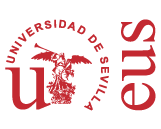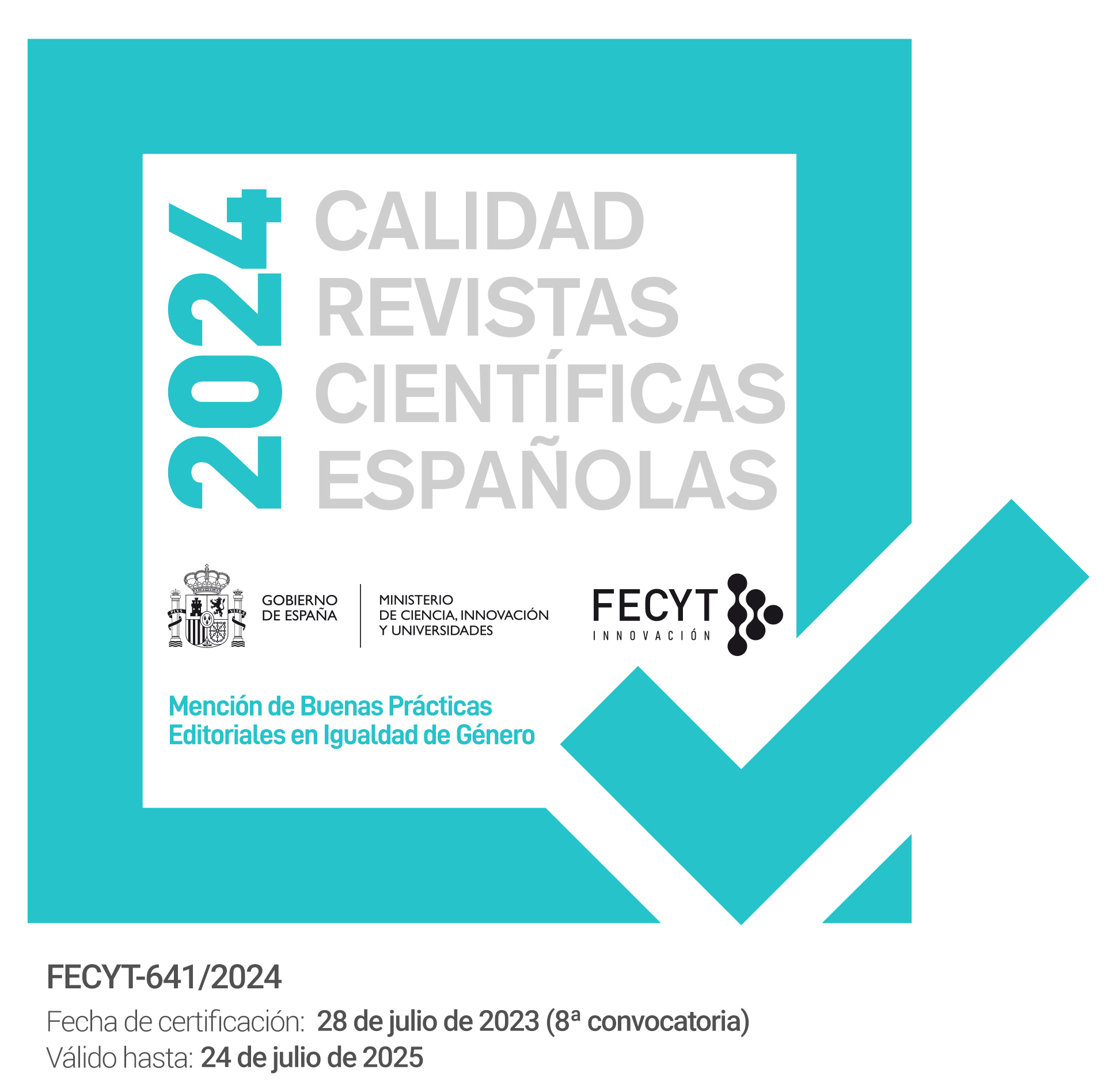La polémica entre Sedano e Iriarte: punta y raíz de la espina
DOI:
https://doi.org/10.12795/PH.2019.v33.i02.04Palabras clave:
López de Sedano, Tomás de Iriarte, Parnaso español, Coloquios de la espina, neoclasicismoResumen
López de Sedano abrió su Parnaso español con la traducción por Espinel del “Arte poética” horaciano. La crítica por Iriarte en 1777, como preámbulo a su propia versión de la epístola, originó una serie de réplicas y contrarréplicas hasta 1785, con la respuesta en el tomo VII del Parnaso y el “diálogo joco-serio” de Iriarte Donde las dan las toman. La polémica se desplaza de los rasgos de la traducción al diseño y realización de la antología de Sedano. El análisis de la respuesta final en los Coloquios de la espina pone de manifiesto las diferencias estéticas entre los dos autores, representantes de dos posiciones opuestas en la concepción del buen gusto y las vías para su actualización. La valoración de las reglas y de la poesía del siglo XVII son dos de los puntos centrales de la discrepancia.
Descargas
Métricas
No metrics found.
Referencias bibliográficas
Aguilar Piñal, F. (Dir.). (1996). Historia literaria de España en el siglo XVIII. Madrid, España: Trotta/CSIC.
Álvarez y Baena, J. A. (1790). Hijos de Madrid, ilustres en santidad, dignidades, armas, ciencias y artes. Madrid, España: Benito Cano, t. III.
Álvarez Barrientos, J. (2004). Nación e historia literaria a mediados del siglo XVIII en España. En L. Romero Tobar (Ed.). Historia literaria/Historia de la literatura. Zaragoza, España: Prensas Universitarias de Zaragoza, 101-114.
Álvarez Barrientos, J. (2006). Los hombres de letras en la España del siglo XVIII: apóstoles y arribistas. Madrid, España: Castalia.
Álvarez Barrientos, J., Lopez, F. y Urzainqui, I. (1995). La república de las letras en la España del siglo XVIII. Madrid, España: CSIC.
Arce, J. (1981). La poesía del siglo ilustrado. Madrid, España: Alhambra.
Arenas Cruz, Mª E. (2003). Pedro Estala, vida y obra. Una aportación a la teoría literaria del siglo XVIII español. Madrid, España: CSIC.
Bautista Malillos, Mª T. (1988). Poesías de los siglos XVI y XVII impresas en el siglo XVIII. Cuadernos Bibliográficos, 48.
Cáseda Teresa, J. F. (2010). Sedano polemista. Crítica y pendencias en la república de las letras. Berceo, 158, 7-30.
Castañón, J. (1973). La crítica literaria en la prensa española del siglo XVIII (1700-1750). Madrid, España: Taurus.
Checa Beltrán, J. (1998). Razones del buen gusto. Poética española del neoclasicismo. Madrid, España: CSIC.
Cotarelo y Mori, E. (1897). Iriarte y su época. Madrid, España: Sucesores de Rivadeneyra.
De Lorenzo Álvarez, E. (Coord.). (2017). Ser autor en la España del siglo XVIII. Gijón, España: Trea.
Durán López, F. (1999). El jesuita Vicente Alcoverro, Vargas Ponce, Moratín, Gabriel de Sancha y otros literatos dieciochescos: historia de una olvidada traducción de Horacio. Cuadernos de Ilustración y Romanticismo, 7, 139-199. https://doi.org/10.25267/Cuad_Ilus_Romant.1999.i7.10
Étienvre, F. (2006). Traducción y renovación cultural a mediados del siglo XVIII en España. En Fernández Albaladejo, P. (Coord.). Fénix de España: modernidad y cultura propia en la España del siglo XVIII (1737-1766). Madrid, España: Marcial Pons, 93-118.
Étienvre, F. (2007). Entre Mayans y Luzán: la necesidad de un Parnaso. Bulletin Hispanique, 109(2), 685-708. https://doi.org/10.3406/hispa.2007.5305
Étienvre, J. P. (2004). Primores de lo jocoserio. Bulletin Hispanique, 106(1), 235-252. https://doi.org/10.3406/hispa.2004.5190
Iriarte, T. de (1805). Donde las dan las toman. Diálogo joco-serio…. En Colección de Obras completas en verso y prosa de D. Tomás de Iriarte. Tomo VI. Madrid, España: Imprenta Real. Recuperado de http://www.cervantesvirtual.com/obra/donde-las-dan-las-toman-dialogo-jocoserio--0/
[López de Sedano, J.J.] (1785). Coloquios de la espina… los publica Juan María Chavero y Eslava, vecino de la misma ciudad de Ronda. Coloquio IV. Málaga, España: Félix de Casa y Martínez. Recuperado de http://bvpb.mcu.es/es/consulta/registro.cmd?id=398957
Menéndez Pelayo, M. (s.a.). Biblioteca de traductores españoles. En Obras completas de la Biblioteca Virtual Menéndez Pelayo. Recuperado de http://www.larramendi.es/menendezpelayo/i18n/corpus/unidad.do?idUnidad=101005&idCorpus=1000&posicion=1
Molina Huete, B. (2003). La trama del ramillete. Construcción y sentido de las “Flores de poetas ilustres”de Pedro Espinosa. Sevilla, España: Fundación José Manuel Lara.
Molina Huete, B. (2013). La poesía del Siglo de Oro a la luz del Buen Gusto: el Parnaso español de López de Sedano. En Lara Garrido, J. y Molina Huete, B. (Eds.). Estudios sobre la recepción y el canon de la literatura española (II, pp. 39-100). Madrid, España: Visor.
Osuna, I. (2003). Poesía y academia en Granada en torno a 1600: La “Poética silva”. Sevilla-Granada, España: Universidad de Sevilla-Universidad de Granada.
Romero Tobar, L. (Ed.). (2004). Historia literaria / Historia de la literatura. Zaragoza, España: Prensas Universitarias de Zaragoza.
Romero Tobar, L. (Ed.). (2008). Literatura y nación. La emergencia de las literaturas nacionales. Zaragoza, España: Prensas Universitarias de Zaragoza.
Sánchez Blanco, F. (1989). Los comienzos de una estética del gusto en el Renacimiento. Revista de Literatura, 102, 395-410.
Sebold, R. P. (1985). Descubrimiento y fronteras del neoclasicismo español. Madrid, España: Cátedra.
Sebold, R. P. (1989). El rapto de la mente. Poética y poesía dieciochescas. Barcelona, España: Anthropos.
Sebold, R. P. (2003). Los poetas miran la historia de la lírica. En Lírica y poética en España, 1536-1870. Madrid, España: Cátedra, 23-179.
Urzainqui Miqueléiz, I. (2007). El Parnaso ‘español’ en la historia literaria del siglo XVIII. Bulletin Hispanique, 109(2), 643-684. https://doi.org/10.4000/bulletinhispanique.341; https://doi.org/10.3406/hispa.2007.5304
Publicado
Cómo citar
Número
Sección
Licencia
Las ediciones impresa y electrónica de esta Revista son editadas por la Editorial Universidad de Sevilla, siendo necesario citar la procedencia en cualquier reproducción parcial o total.
Salvo indicación contraria, todos los contenidos de la edición electrónica se distribuyen bajo una licencia de uso y distribución “Creative Commons Atribución-NoComercial-SinDerivar 4.0 Internacional” ![]() . Puede consultar desde aquí la versión informativa y el texto legal de la licencia. Esta circunstancia ha de hacerse constar expresamente de esta forma cuando sea necesario.
. Puede consultar desde aquí la versión informativa y el texto legal de la licencia. Esta circunstancia ha de hacerse constar expresamente de esta forma cuando sea necesario.
Los autores/as que publiquen en esta revista aceptan las siguientes condiciones:
- Los autores/as conservan los derechos de autor y ceden a la revista el derecho de la primera publicación, y consienten en que se distribuya con una licencia Creative Commons By NC ND 4.0, que permite a terceros utilizar lo publicado siempre que mencionen la autoría del trabajo y a la primera publicación en esta revista, no se haga uso comercial y se reutilice de igual forma."
- Los autores/as pueden realizar otros acuerdos contractuales independientes y adicionales para la distribución no exclusiva de la versión del artículo publicado en esta revista (p. ej., incluirlo en un repositorio institucional o publicarlo en un libro) siempre que indiquen claramente que el trabajo se publicó por primera vez en esta revista.
- Se permite y recomienda a los autores/as que una vez publicado el artículo en la revista Philologia Hispalensis (versión online) se descarguen el PDF correspondiente y lo difundan por internet (ResearchGate, Academia.edu, etc.) ya que puede conducir a intercambios científicos productivos y a una mayor y más rápida difusión del trabajo publicado (vea The Effect of Open Access).
Aceptado 2019-06-28
Publicado 2019-12-23
- Resumen 202
- HTML 78
- PDF 79












